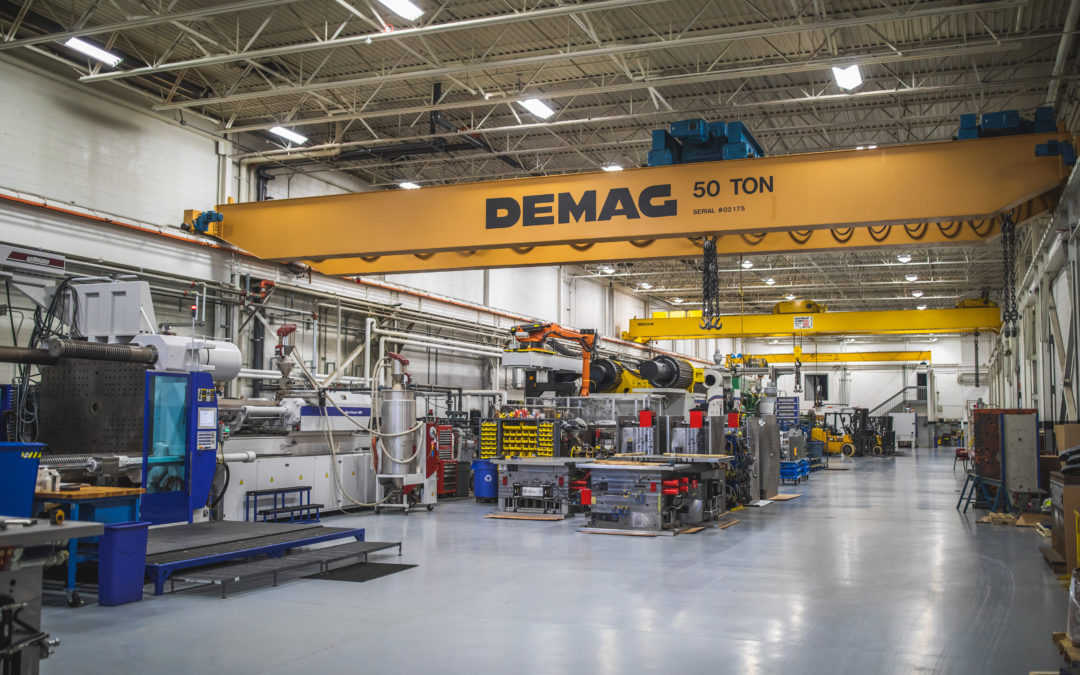Just like so many others, the plastic molding industry is feeling the effects of supply chain bottlenecks, shortages, and rising costs of gasoline, products, and tools.
According to a post on the Kearney organization’s website, nearly every sector connected with post-COVID reopening saw price increases across the board.
The trend continues well into 2022, as we are seeing gas prices at more than $5 a gallon, supply chain bottlenecks, grocery prices skyrocketing, and more.
As noted in the post, shortages are due to a “misalignment of supply and demand” that began with the pandemic. During that time of greater online transactions and stay-at-home orders, the economy experienced unusual patterns. And the ripple waves continue.
“This resulting misalignment of supply and demand (led to) shortages of basic manufacturing inputs from plastic resins and lumber to semiconductors, copper, and steel, with associated transportation glitches and rising prices for inputs and finished products. The by-product: a sudden and sustained jump in inflation between March and June 2021 to more than 5 percent year-over-year,” it states.
The supply chain industry continues to suffer, which may be impacting your manufacturing facility. For example, a late 2021 winter freeze in Texas triggered global shortages of resins for plastics production.
Inflation impacts industries that rely on one another; if a shipper must spend more on gasoline to get plastics to a manufacturer, that manufacturer might be forced to increase prices for businesses that are integrating the plastics, and the businesses must increase prices for the consumers who will ultimately use them.

Creative solutions may help reduce expenses at your plastic manufacturing, distribution, or integration facility.
Thinking Outside of the Box
All of this combined has affected the plastics industry and manufacturers, which means creating innovative ways to deal with inflation and shortages is essential.
Businesses may be able to minimize at least some of the effects of inflation by doing the following:
1. Enhance financial transparency within the company.
Use digital financial tools to track every expense, allowing any key stakeholders to make decisions about what’s important and what’s not.
2. Think outside of the box.
Businesses may feel the need to remain with the status quo – but that’s not always the case. If possible, consider other sources for your needs. Compare this concept to buying brand vs. generic products at the grocery store. Does a different product offer the same results? Will a different brand work just as well as the more expensive one you’re using now? As long as you’re not burning bridges with vendors or suppliers, considering other solutions may help you eliminate unnecessary expenses.
3. Differentiate between strategic and non-strategic spending.
As noted on the Harvard Business Review’s website, make sure expenses are expenses for good reason. Prioritize higher ROI investments. Smart investment decisions could improve a company’s financial strategy and enable it to compete with competitors.
4. Reduce expenses – but keep your team intact.
Keeping people employed will only help to stabilize or improve the economy, and it will also encourage businesses to work with you and employees to work for you. That being said, consider combing through your expenses to see where harmless cuts could be made.
5. Work smarter.
Perform a key performance indicator analysis of your team members’ workdays. (Include the managers in this KPI analysis!)
- How much progress is everyone making on a daily basis?
- Do they take unnecessary steps to complete a task?
- Are they more suitable for a different type of job within your organization?
- If two people are doing multiple tasks, would it make the workday flow more seamlessly if each person completes only one of those tasks?
Optimizing work processes can help cut down on unnecessary expenses in hourly pay and tools or supplies needed to complete the work.
6. Take advantage of plastic recycling.
Are there any areas where you can use recycled plastic (which may be less expensive than virgin plastic)? Many organizations focus on innovative uses of plastics, and you may be able to do so as well if you are not already.
Tailoring these suggestions to meet the needs of your plastic manufacturing company may help you stabilize income and expenses. You may also be able to modernize processes to keep up with trends. Workplace processes don’t seem to be reverting to pre-pandemic times anytime soon.






